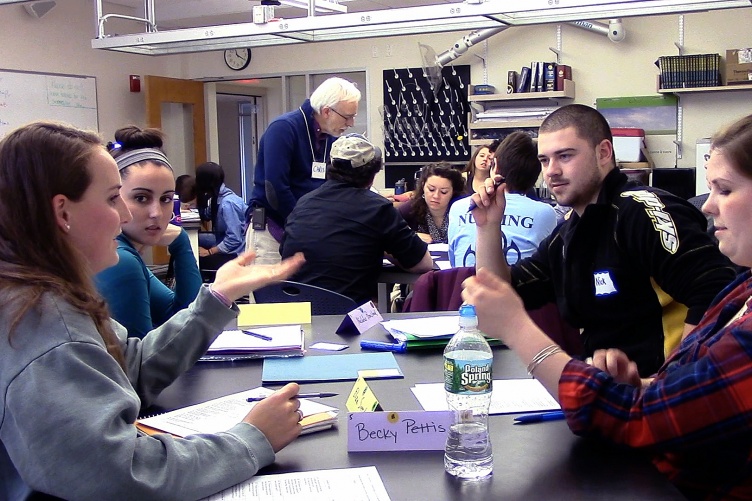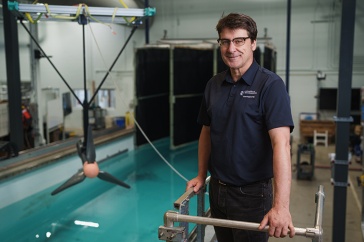
Students in professor Chris Bauer's "Fire & Ice" class, which was part of a National science Foundation research project that filmed an entire semester of classes from multiple perspectives. The professional development research resource is now publicly available to educators across the globe.
A UNH researcher’s National Science Foundation grant focused on professional development for college educators in STEM fields is providing a unique window into his classroom.
Christopher Bauer, professor of chemistry, video documented every moment of an entire semester in his inquiry-based course, “Fire and Ice,” which focused on the concepts of heat and temperature from the perspectives of biology, chemistry, engineering, history, physics and physiology.
“We wanted to capture the course and let people see what happens behind the curtain,” says Bauer, who held the course at UNH in 2015. “The goal is to give them a glimpse of how the students, instructors and interns interact, and allow them to analyze the class design.”
The resource, which also includes all course materials and student work examples, allows visitors to view the class from different perspectives depending on their purpose and pathway, choosing to make a quick visit or to follow an in-depth research question. It showcases an inquiry teaching model and shows how students respond in that environment. Bauer says visitors can follow suggested pathways and perspectives or blaze their own trails. It also includes 28 class sessions of video from four cameras.
“This resource and the underlying repository are a rich resource for teaching activities, professional development, and research,” says Bauer. “There is likely nothing else like this in the world.“
Since conducting the class, Bauer, with the help of several UNH students and staff members, has worked to edit all the video footage and is actively sharing the research with educators across the globe. It was published in the American Journal of Physics and in Chemical Education Xchange and is in review for an additional publication. He is able to keep track where visitors come from and has already had thousands of international downloads in the past year.
“We want to get this resource in front of people that teach STEM courses at the college level so they can reflect on how they are teaching,” says Bauer. “This is a real classroom, not an idealized one, with real students and instructors who are trying to provide a rich learning experience.”
Other ideas addressed in the research include following different students to see how they respond to an inquiry environment, analyzing how graduate teaching residents report their evolution across the semester, and how the instructor anticipates and debriefs each class session.
-
Written By:
Brooks Payette | College of Engineering and Physical Sciences



















































